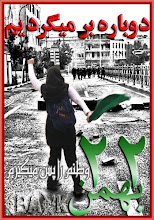


Cold comfort is a very simple work, a collection of small, square, imprinted and slightly cushioned hollow tiles, arranged together on a child-sized iron bedstead to resemble a patchwork quilt. The bed is placed in a dimly-lit, cell-like room, with a curved ceiling like a tunnel and with one entrance and no windows. It’s a forlorn sight.
There is a palpable sense of sorrow hanging in the dimly lit rain-soaked air. It’s impossible not to think of Jane Eyre or the Princes in the tower. It has a theatrical, film location quality to it which gives it a contemporary feel but simultaneously recalls images of Dickens’ characters and Victorian London, in the ‘produced’ sense.
Fairman has very successfully introduced devices of melodrama to the work through her use of lighting and of the damp, dark cell. She has kept the visual qualities simple and in so doing, has allowed the ceramic quilt on its bed to communicate what Jorunn Veiteberg has called, ‘craft’s affective side,’ The patchwork quilt, both as an image and as a thing, and here it’s used as both, is steeped in cultural memory. It is an archetype of craft and a recognisable object which can speak to a wide and culturally diverse audience. Fairman uses it to generate very personal, intimate meaning, but one to which audiences can and did respond.
Fairman has used craft practice as the central agent of narrative in this work with considerable agility. The cold hardness of the ceramic ‘quilt’ is the tactile surprise which works, not least because you can pick up each piece, turn it over in your hands, and know how hard it is. In so doing you encounter the imprints of fine lace, embroidery, bits of doilies and so forth which are the pieces of female biography, the domestic memorabilia from which quilts are made. Quilts, traditionally, are made from ‘leftovers’. There is a class aspect to their story: the very wealthy didn’t need to bother too much with patchwork quilts. There are ‘posh’ quilts, made from new fabric, but overwhelmingly they’re ‘backyard’. Cold Comfort deploys a down-home, domestic, useful and traditional craft form, to generate a new, contemporary narrative, which suggests that the genealogy of this work is closer to feminist art from the 1970s and 80s, than to modernist craft pottery.
Fairman took this piece to some local woodland and was surprised at how much the public, especially children, took to it and wanted to get involved in some way. ‘One child was clearing all the leaves away because she didn’t want this beautiful thing to get dirty.’ Left on it’s own in that kind of environment, it might quickly look like a murder scene and would be too visceral, for me anyway. Cold Comfort is at its strongest when it is interactive. Fairman was wise to avoid a white cube, gallery environment which would have made it very stagey. The brickwork of shunt and of basement room in her house allowed the ‘affective’ side to do its work.
Cold Comfort was exhibited at Shunt, November 2008 and previewed at the artist’s house in Bermondsey.
Fairman is also part of the Buff group, featured earlier this year on The C Word.











































